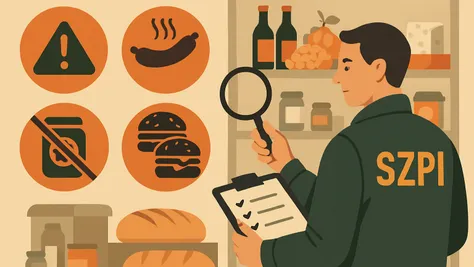The rising popularity of GLP-1-based medications, such as semaglutide and liraglutide, is not only reshaping how people approach weight loss, but is also beginning to influence the food industry. While pharmaceutical companies are seeing a surge in demand for obesity treatments, food producers are facing a new kind of challenge: how to offer products that appeal to consumers whose eating habits have changed significantly. At the same time, they must navigate how to label such products without breaching strict regulations governing food-related claims. A new trend is emerging at the intersection of nutrition and pharmaceuticals—one that EU law has yet to explicitly address.
What GLP-1 is and why it is shaping the food market
GLP-1 (glucagon-like peptide 1) is a hormone naturally produced in the small intestine that plays a key role in signalling satiety. Medical products that mimic its effects help regulate appetite and contribute to weight loss. As their use becomes more widespread, consumer behaviour is shifting—people are eating smaller portions and gravitating toward “functional” foods with higher nutritional value.
Growing public interest in weight management and metabolic health suggests that the functional food market may soon follow suit. Scientific research is already exploring substances that can naturally influence GLP-1 signalling, and manufacturers of food and dietary supplements are beginning to look for ways to offer products that “support GLP-1 effects,” “do not interfere with its activity,” or are “suitable for use alongside GLP-1 agonist therapy.” A notable pioneer in this emerging space is Nestlé, which announced the launch of a new food brand, Vital Pursuit, on the US market in 2024, aimed primarily at customers taking semaglutide-class medications or other GLP-1 mimetic drugs in their weight loss journey.[1]
Is rigid European law ready for “GLP-1-friendly” foods?
The European context: the boundary between marketing and health claims
European law does not currently address the issue of GLP-1 friendly claims explicitly. In general, however, it is very strict in the area of claims. Any claim suggesting a food’s impact on bodily functions or weight loss is governed by two key regulations:
- Regulation (EU) No 1169/2011 on the provision of food information to consumers, which prohibits misleading or deceptive labelling, in particular Article 7(1) (information shall not be misleading) and Article 7(3) (food information shall not attribute to any food the property of preventing, treating or curing a human disease, nor refer to such properties); and
- Regulation (EC) No 1924/2006 on nutrition and health claims, which stipulates that a health claim may only be used if it is expressly authorised by the European Commission and included in the list of permitted claims.
It should be noted that:
→ GLP-1 friendly communication in food marketing could, without further specification, risk being misleading: no legal regulation currently defines what a GLP-1 friendly food should actually meet. Each manufacturer then could interpret the criteria in their own way, potentially leaving consumers confused. In fact, the lack of clear criteria (and absence of a scientific basis) has also affected foods labelled as suitable for diabetics, which offer a cautionary parallel. The labelling "suitable for diabetics" or "dia" was considered by the European Commission unauthorised and misleading due to the absence of a scientific basis for setting specific composition requirements for foods intended for diabetics. According to the conclusions of the European Commission, people with diabetes can consume all foods, provided they are informed about the energy value and sugar content of the food, so that they can adjust their sugar intake and create a suitable diet accordingly. Won't GLP-1 friendly foods face the same conclusion?
→ Currently, there are no authorised health claims in the EU relating to the suitability of specific foods during GLP-1 therapy. Claims suggesting weight loss—such as “helps lose weight”—are also prohibited when presented as health claims. Moreover, from a certain perspective, consumers might implicitly perceive a therapeutic effect in such products. However, therapeutic claims are strictly forbidden for food products under EU law.
Where European regulation might be headed
Within the framework of European legislation, caution and a strong emphasis on preventing consumer deception can be expected. If a manufacturer wishes to place on the market foods aimed at users of GLP-1 medications, it will likely need to use neutral labelling—such as “high protein,” “source of fibre,” or other permitted nutrition claims listed in the annex to Regulation (EC) No 1924/2006.
The European debate is still in its early stages, and according to available information, the European Commission is not currently preparing a specific framework for “GLP-1 friendly” foods. For now, such products will be assessed under existing rules.
Conclusion
Recent developments illustrate how dynamically the food sector can adapt to emerging health trends and evolving consumer needs. New waves of diets and eating habits always bring challenges in how food properties are communicated, which is why it’s essential that consumers are well-informed about complex nutritional needs—and that manufacturers highlight product properties in compliance with applicable regulations.
The European regulatory framework offers room for innovation. Manufacturers can work with permitted nutrition claims such as “high protein” or “source of fibre,” while also providing consumers with quality nutritional information to support informed decision-making. Transparent communication based on scientific evidence and in compliance with legal boundaries can be a competitive advantage—and help build consumer trust.
The "GLP‑1 friendly" food phenomenon shows that the food industry has an opportunity to respond to new health trends responsibly and in compliance with law. The key to success will be finding the right balance between innovative marketing and protecting consumers from misleading information.
If you have any questions, feel free to contact us at HAVEL & PARTNERS. We are ready to help you navigate this evolving area.








